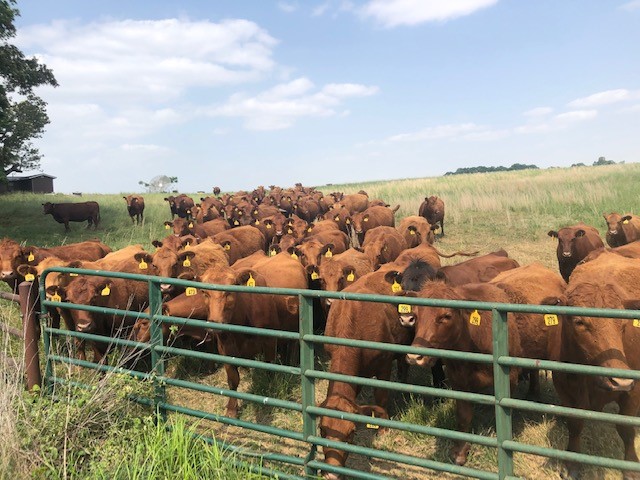David P. Anderson, Texas A&M University | Sep 09, 2022
A lot has been written about beef cow culling this year due to widespread drought in the Western half of the country and high costs relative to calf prices. Most of that has focused nationally. This article focuses on cow slaughter in the Southern Plains. Federally inspected beef and dairy cow slaughter is reported regionally, with states grouped into roughly geographical regions. Region 6 includes Texas, Oklahoma, Louisiana, Arkansas, and New Mexico.
Cow packing plants in region 6 have processed 668,000 beef cows this year, up 31 percent (or 157,000 head) from last year. They have processed 217,000 dairy cows this year, just slightly below last year.
Of particular interest is a comparison of cow culling this year to that of 2011 and 2012, during the last major drought in Texas and other parts of region 6. So far, in region 6 this year, 8,000 more beef cows have been slaughtered than in 2011. Slaughter this year is 164,900 head more than in 2012. The 217,000 dairy cows processed this year is well above the 130,200 head slaughtered in 2011, but close to the 213,800 in 2012. It’s worth noting that Texas had 200,000 more dairy cows on January 1, 2022 than on January 1, 2011.
The states in region 6 reported 8.4 million beef cows on January 1, 2022. Those states had 8.8 million beef cows on January 1, 2011. While cows may come into the region for slaughter, it’s likely that a larger proportion of the herd has been culled this year than in the last major drought. Of course, nationally, beef cow slaughter is up 300,000 head this year over 2021 and 263,500 over 2011.
Significant rainfall in parts of Texas over the last couple of weeks may restrain culling in the near future. The rain has also brought more moderate temperatures, providing another boost. Watch national and regional beef cow culling over the next 6 weeks to better gauge the impact of these storms. Seasonally, the largest cow culling weeks of the year nationally occur in October and November. Rain and earlier heavy culling rates could pull back slaughter and boost prices.














